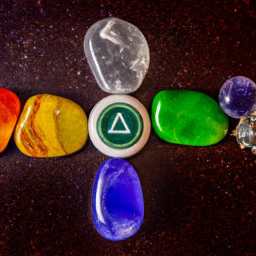The ancient practice of yoga has gained immense popularity in recent years for its physical and mental health benefits. One integral aspect of yoga is the use of asanas or postures to balance the energy flow within the body. In particular, chakra balancing postures are a key part of yoga that aim to bring harmony and alignment to the seven main chakras in the body.
Chakras are believed to be energy centers located along the spine, each representing a different aspect of ourselves – from our physical health to our emotional and spiritual well-being. When these chakras are in balance, we experience a sense of overall wellness and vitality. However, when they are blocked or imbalanced, we may experience physical or emotional discomfort.
Chakra balancing postures work by stimulating and activating the chakras, allowing energy to flow freely and restore balance. Practicing these postures can help alleviate physical ailments, promote emotional stability, and bring a sense of inner peace and harmony.
Let’s explore some popular chakra balancing postures and their benefits:
1. Root chakra – located at the base of the spine, this chakra governs our sense of security and stability. The Virabhadrasana (Warrior Pose) is a grounding posture that strengthens the legs and activates the root chakra. It can help us feel centered and secure in our bodies.
2. Sacral chakra – located in the lower abdomen, this chakra is associated with creativity and sensuality. The Baddha Konasana (Butterfly Pose) stimulates this chakra and can help increase our creativity and passion.
3. Solar Plexus chakra – located in the stomach area, this chakra is responsible for our confidence and self-esteem. The Naukasana (Boat Pose) strengthens the core muscles and activates the solar plexus chakra, boosting our self-confidence and sense of empowerment.
4. Heart chakra – located in the center of the chest, this chakra governs love, compassion, and forgiveness. The Matsyasana (Fish Pose) stretches the chest and stimulates the heart chakra, allowing for a greater sense of love and empathy.
5. Throat chakra – located in the throat, this chakra is associated with self-expression and communication. The Halasana (Plow Pose) activates this chakra and can help us express ourselves more clearly and confidently.
6. Third Eye chakra – located in the center of the forehead, this chakra is linked to intuition and wisdom. The Balasana (Child’s Pose) is a gentle posture that allows us to turn inward and connect with our intuition.
7. Crown chakra – located at the top of the head, this chakra represents our spiritual connection and higher consciousness. The Sirsasana (Headstand) is an advanced posture that stimulates the crown chakra and can lead to a deeper sense of spiritual awakening.
In addition to these specific postures, there are also sequences and flows designed to balance all the chakras in one practice. For instance, the Surya Namaskar (Sun Salutation) incorporates multiple postures that work on different chakras and can be a powerful way to bring balance and harmony to the entire energy system.
It’s important to keep in mind that chakra balancing postures may not have immediate or drastic effects on our well-being. They work subtly and gradually, often having a cumulative effect over time. Regular practice and mindfulness are key to experiencing the full benefits of these postures.
In conclusion, incorporating chakra balancing postures into our regular yoga practice can help us achieve overall physical, emotional, and spiritual well-being. By activating and balancing the energy flow in our bodies, we can create a sense of harmony and alignment in all aspects of our lives. So next time you step onto your yoga mat, remember to also focus on balancing your chakras for a deeper and more holistic experience. Namaste.





It’s amazing what a conscious effort at Chakra Balancing can do for the body and mind!
TincupBabs: I’m excited to learn more about this! #ChakraBalancing